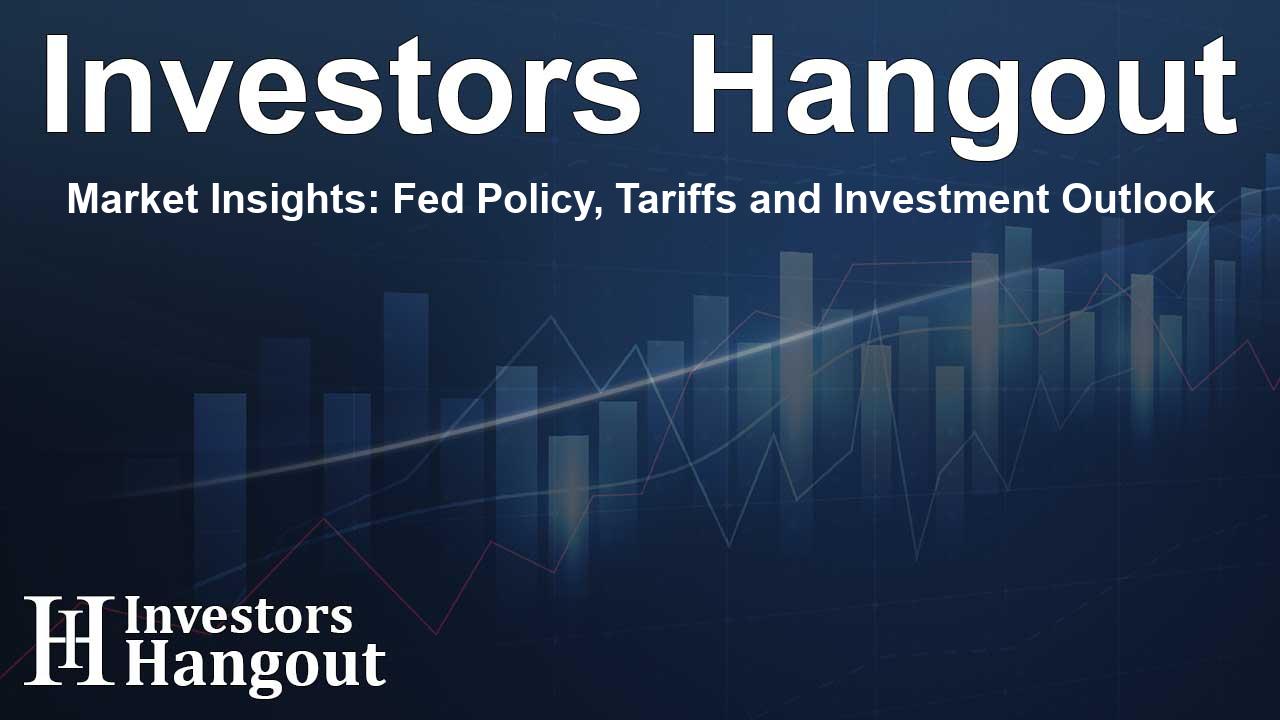Market Insights: Fed Policy, Tariffs and Investment Outlook

Market Sentiment Amid Economic Changes
U.S. stock index futures have edged lower as investors reckon with expectations of slower interest rate adjustments while also navigating the potential trade tariffs proposed by the incoming administration.
Recent trading sessions have reflected a muted sentiment on Wall Street. The minutes from the Federal Reserve's latest meeting highlighted a hawkish perspective, indicating that the central bank might be more cautious in cutting interest rates than initially expected. These concerns coincide with rising speculation regarding trade tariffs that could be enacted by President-elect Donald Trump.
As we delve further into market movements, it was noted that Trump may declare a national economic emergency to support a wide-reaching imposition of trade tariffs. This could heavily impact not only the U.S. economy but also relations with trading partners.
Understanding Fed Minutes and Economic Ramifications
The insights from the Fed's meeting minutes suggest a shift in strategy regarding interest rate cuts. Policymakers are now indicating a preference for a more measured approach, reducing the projected cuts for 2025 from four to just two. This is particularly crucial as inflation concerns linger in the backdrop.
As the Fed pulled back on its earlier forecasts, it reflects worries about persistent inflation that appears resistant to correction. Following a significant 1% cut in 2024, the cautious approach is set to adapt to the labor market's robustness and inflationary pressures.
Moreover, the Fed has expressed that the economic consequences of Trump's protectionist policies could prolong the inflation issue, complicating recovery efforts. Speculations about upcoming economic policies are adding another layer of anxiety on Wall Street.
Wall Street's Performance: A Measure of Readiness
This week, Wall Street indexes remained somewhat rangebound following a lackluster start to the new year. The S&P 500 reached 5,917.30 points, while the NASDAQ Composite declined slightly to 19,475.93 points. Meanwhile, the Dow Jones Industrial Average saw a modest uptick, settling at 42,635.20 points.
Technology stocks, a significant driver of market activity, showed signs of weakness as investors decided to take profits after a remarkably strong performance in 2024. Investors are now keenly looking ahead to the upcoming earnings season, which will kick off with reports from major financial institutions. These earnings will likely provide further clarity on the market's trajectory amidst the evolving economic landscape.
Looking Forward
The upcoming non-farm payrolls data will play an essential role in shaping the Fed's future outlook on interest rates. With the labor market exhibiting strength despite current challenges, many are watching closely to see how these figures might alter expectations.
Furthermore, the implications of tariffs introduced by Trump are set to reverberate across various sectors, affecting not only import costs but also consumer prices. While such tariffs may provide short-term protection for domestic industries, the long-term effects could result in operational hurdles for businesses reliant on international trade.
In summary, as the economic narrative unfolds with Fed policy and potential trade measures, investors must navigate a complex array of factors. Market reactions will be pivotal as we move deeper into earnings season, highlighting the need for diligence and adaptability in investment strategies.
Frequently Asked Questions
What factors are leading to the decline in U.S. stock futures?
The decline in U.S. stock futures is largely attributed to market apprehensions regarding slower interest rate cuts by the Fed and the potential introduction of tariffs by the new administration.
How is the Federal Reserve adjusting its interest rate strategy?
The Fed's recent minutes indicated a shift towards a more cautious approach, reducing expected rate cuts for 2025 from four to two as they navigate persistent inflation risks.
What are the implications of Trump's proposed tariffs?
Trump's proposed tariffs may lead to increased costs for consumer goods and could contribute to higher inflation, complicating the economic landscape as businesses adapt to regulatory changes.
How did Wall Street indices perform recently?
Wall Street indices showed a mixed performance recently, with the S&P 500 seeing slight gains while the NASDAQ experienced a small drop. Overall market activity has been relatively rangebound.
What upcoming economic data should investors watch?
Investors should closely monitor the upcoming non-farm payrolls data, as it could influence the Federal Reserve's future decisions on interest rates and economic policy.
About Investors Hangout
Investors Hangout is a leading online stock forum for financial discussion and learning, offering a wide range of free tools and resources. It draws in traders of all levels, who exchange market knowledge, investigate trading tactics, and keep an eye on industry developments in real time. Featuring financial articles, stock message boards, quotes, charts, company profiles, and live news updates. Through cooperative learning and a wealth of informational resources, it helps users from novices creating their first portfolios to experts honing their techniques. Join Investors Hangout today: https://investorshangout.com/
Disclaimer: The content of this article is solely for general informational purposes only; it does not represent legal, financial, or investment advice. Investors Hangout does not offer financial advice; the author is not a licensed financial advisor. Consult a qualified advisor before making any financial or investment decisions based on this article. The author's interpretation of publicly available data shapes the opinions presented here; as a result, they should not be taken as advice to purchase, sell, or hold any securities mentioned or any other investments. The author does not guarantee the accuracy, completeness, or timeliness of any material, providing it "as is." Information and market conditions may change; past performance is not indicative of future outcomes. If any of the material offered here is inaccurate, please contact us for corrections.